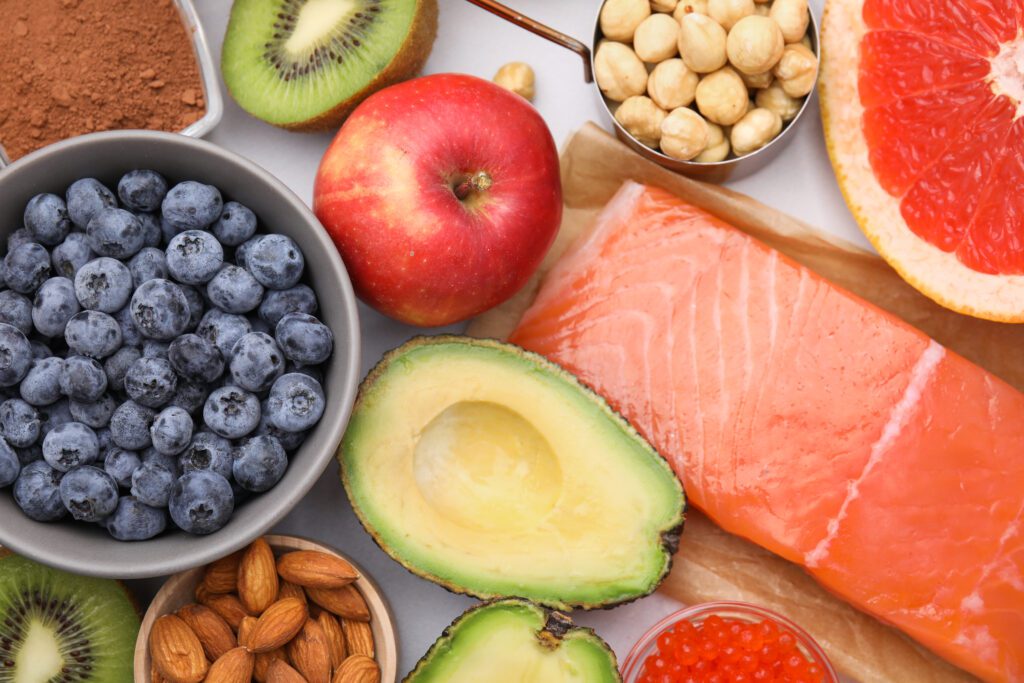The Secret to a Healthy Diet Is Hidden In the Details
If you wanted to do just one thing that would have a positive impact on your health through every age and stage of your life, the one thing that would likely be the most impactful is to eat a healthy, balanced diet. But what exactly does a well-balanced diet look like? The latest research shows that it’s not just about calories in versus calories out, but that you also need to eat a healthy balance of the three major macronutrients. Take our quiz and learn about all the parts of a balanced diet for optimal health.
1. True or false? Having unhealthy dietary habits is one of the most important causes of disability and premature death, and macronutrients play a critical role.
2. Macronutrients are nutrients your body needs in large amounts, and they include which of the following?
A Carbohydrates
B. Fats
C. Protein
D. All of the above
3. Which of the following is the definition of micronutrients?
A. Small amounts of macronutrients
B. Nutrients that are small in size
C. Essential compounds like vitamins, minerals, and antioxidants, that are needed in smaller amounts by the body for biochemical processes
D. Nutrients that are not needed by the body at all
4. Which of the following is the role carbohydrates play in the body?
A. Building healthy bones
B. Providing your body with a source of energy
C. Contributing to deep sleep
D. None of the above
5. Which of the following is the role protein plays in the body?
A. Rebuilding and repairing your body’s tissues
B. Aiding in digestion
C. Maintaining hydration
D. None of the above
6. Which of the following is the role fat plays in the body?
A. Maintaining hormone balance
B. Controlling satiety, or feeling full
C. Helping the body absorb certain micronutrients like vitamins, such as vitamins A, D, E and K
D. All of the above
7. True or false? Carbohydrates are broken down into simple carbohydrates, which are found in sugary foods and foods like baked goods and white bread, are digested quickly, and can give you a sugar rush but then leave you feeling fatigued; and complex carbohydrates, such as whole grains and fiber-rich vegetables, which are digested more slowly and help you feel full for longer.
8. Which of the following is the recommended macronutrient breakdown for your diet, though it may vary depending on your weight, height, age, activity levels and weekly weight-loss goals?
A. 20%-30% fat, 30% protein and 40%-50% carbohydrates
B. 10% fat, 70% protein and 20% carbohydrates
C. 50% fat, 10% protein and 40% carbohydrates
D. 40% fat, 10% protein and 50% carbohydrates
9. True or false? A good rule of thumb is to look at nutrition labels and choose the options where the grams of protein in the food product are higher than grams of sugar or total sugar.
10. Chronic macronutrient overconsumption can be a cause for which of the following health concerns?
A. Weight gain and obesity
B. Type 2 diabetes
C. Hypertension
D. All of the above
True or false? Overeating protein alone is not associated with increased obesity and has been shown to improve body composition, especially in individuals who do some form resistance exercise; but excess consumption of a single macronutrient in a calorie-appropriate diet means that another macronutrient is being under-consumed, which can result in nutrient deficiencies.
compiled by ERIKA ALDRICH / Information from The National Institute of Health and Cedars-Sinai
ANSWERS
- True
- D. All of the above
- B. Providing your body with a source of energy
- C. Essential compounds like vitamins, minerals, and antioxidants
- A. Rebuilding and repairing your body’s tissues
- D. All of the above
- True
- A. 20%-30% fat, 30% protein and 40%-50% carbohydrates
- True
- D. All of the above
- True
